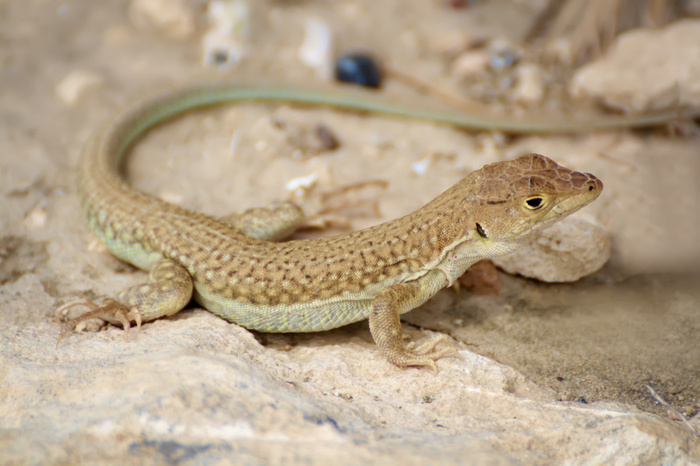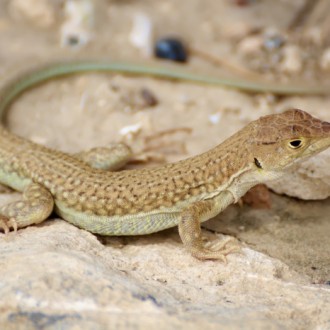


How to Draw a Lizard
Please PAUSE the video after each step to draw at your own pace (scroll down to see the final lizard drawing).
For the first few steps, don’t press down too hard with your pencil. Use light, smooth strokes to begin.
Step 1: Draw a long, slanted oval as a guide for the lizard’s body. It doesn’t need to be perfect. It’s just a guide.
Step 2: Draw a smaller, slanted oval above and to the right of the first as a guide for the lizard’s head.
Step 3: Inside the head draw two intersecting lines. These are guides that will help in placing the lizard’s facial features later on.
Step 4: Draw two curved lines that connect the lizard’s head to the body and form the neck.
Step 5: Draw three short, angled lines underneath the lizard’s body as guides for the feet.
Step 6: On the left side of the lizard’s body, draw a long curved line as a guide for the tail. The longer you draw the line, the longer the lizard’s tail will be.
That’s it for the initial sketch! From this point on, press harder with your pencil to get a more defined sketch.
Step 7: Draw the lizard’s eye on the upper left side of where the two guide lines cross. The eye looks like an over-inflated football. Inside, draw a circle for the actual eyeball. Inside of that draw another circle and shade it in for the lizard’s pupil. Shade in the inside of the eye and draw some extra lines surrounding it for detail.
Step 8: Use the initial oval shape as a guide to draw the lizard’s mouth. Follow the shape of the oval but make it bumpier. The mouth extends toward the inside of the lizard’s head below the guide line.
Step 9: Draw the lizard’s nose near the right edge as a small shaded circle with a few lines surrounding it.
Step 10: USe the initial oval shape again to draw the rest of the lizard’s head. Use curved lines to give it a bumpy feeling.
Step 11: Draw the lizard’s neck using the lines as guides. Draw more lines to represent the folds of the skin and tiny triangles for the spikes on the back.
Step 12: Draw the lizard’s hind leg using the initial line as a guide. Just go around the guide line and make the leg thicker. Use curved lines when drawing the leg for bumpy skin. Draw the five toes at the end of the lizard’s foot. They are curved and end at a point where the claw is. The lizard’s toes are splayed out instead of pointing forward.
Step 13: Draw the lizard’s front feet using the initial line as a guide. Use the same technique as with the hind foot. Go around the line using a bumpy line to give the leg thickness. At the end of the lizard’s foot draw the toes splayed out. Remember to make them pointy for the claws. The other foot is behind the lizard’s body, so only draw the pointy toes.
Step 14: Use the initial oval shape to draw the lizard’s torso. Use a bumpy line, especially on top to represent the spikes.
Step 15: Draw the lizard’s tail using the initial line as a guide. Give the tail more girth at the base and make the top part spiky. The tail ends at a point. You can make the lizard’s tail as along or as short as you want.
Step 16 (Optional): You can stop here for a sketchy look or you can erase as much as you can of the guides for a cleaner look. Don’t worry about erasing all of the guides. It’s okay to leave some behind.
Step 17 (Optional): You can draw some lines throughout the lizard’s body for extra detail. The lines give the skin a rougher, scalier look. Don’t draw every individual scale, just a few to give it texture.
Step 18 (Optional): Add some shading to give your lizard drawing more dimension and volume. Pick the direction of the light source when shading so that the shadows are consistent with it. Vary the pressure on your pencil to get different degrees of tonal value.
Step 19 (Optional): Add a cast shadow underneath. This helps ground the lizard so it doesn’t appear to be floating.
Final Step (Optional): You can add more value throughout your lizard drawing for extra detail. To indicate the rough texture of the skin, draw many squiggly lines all over the body. Don’t overthink it. Just add them randomly. It’s a good idea to use reference if you want more accuracy in your lizard drawing.


